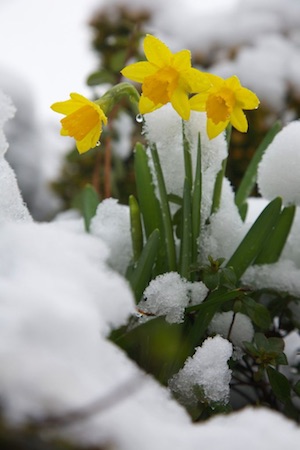“No winter lasts forever; no spring skips its turn,” observed naturalist, author, and journalist Hal Borland. Borland initially completed his undergraduate degree in engineering, but later went on to earn a degree in literature after discovering a passion for writing. As the editorial chronicler of the seasons in The New York Times, Borland’s columns vividly showcased the search for meaning in the natural world as timely, important, and imperative.
Those who champion the arts and sciences can find inspiration in Borland’s example. We must show the timeliness, importance, and imperativeness of the arts, humanities, mathematics, and sciences on campuses and in communities. For faculty on campus, Phi Beta Kappa recently compiled departmental advocacy guides from a range of disciplines facing cuts on many campuses this spring. You can find valuable advice from scholarly societies like the American Historical Association, the American Philosophical Association, and American Physics Society. Although there is no silver bullet for the difficult financial challenges facing higher education right now, there are immediate, medium, and long-term steps faculty can take to improve the standing of your departments.
National organizations are also documenting the benefits of the liberal arts and sciences for their communities and state, especially in response to the health, racial, economic, and social crises stemming from the pandemic. For example, the National Humanities Alliance’s Humanities for All initiative showcases the impact of more than 1,800 public humanities projects with a searchable database by location that advocates can use in outreach to state and federal policymakers as they look for innovative solutions to these pressing problems.
Liberal arts and sciences graduates like you can also provide crucial advocacy roles as legislatures adopt state budgets from early spring to early summer. Higher education state budgets are considered discretionary spending, a tempting place for lawmakers to raid when looking to make cuts. Some policy experts now forecast a reduction of up to $74 billion in state higher education funding for 2022. Government relations teams often welcome constituent support from non-alumni and can provide data, asks, and student stories. The Society’s chapter directory can help you connect with liberal arts and sciences institutions near you.
Federal investments in the arts, humanities, mathematics, and sciences are also important to potentially off set state level cuts. Th is year, national advocates anticipate that the budget process will take longer than usual. The Society will post time-sensitive requests in our Arts & Sciences Are Key toolkit.
Another Borland observation could also prove useful this season. “Knowing trees, I understand the meaning of patience. Knowing grass, I can appreciate persistence.” Spring 2021 will require both patience and persistence from all champions of the arts and sciences. Now, it’s time to get to work. Access all the resources mentioned in this article at toolkit.pbk.org/ resources.




